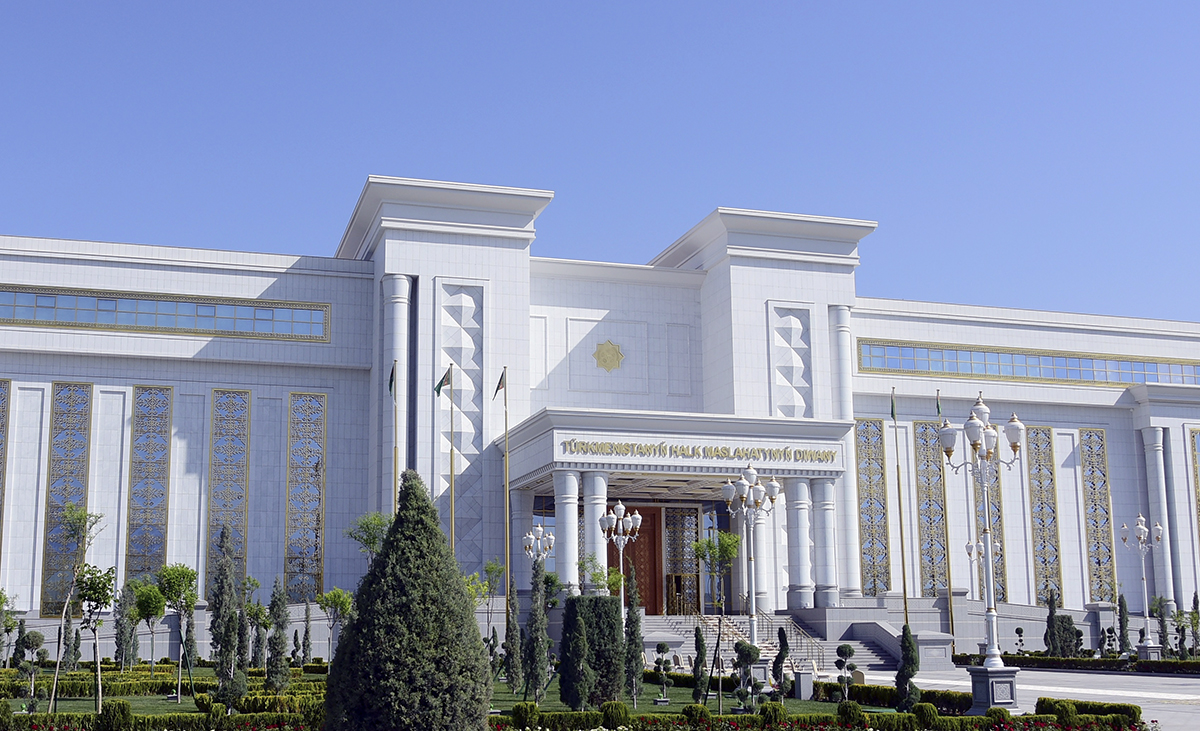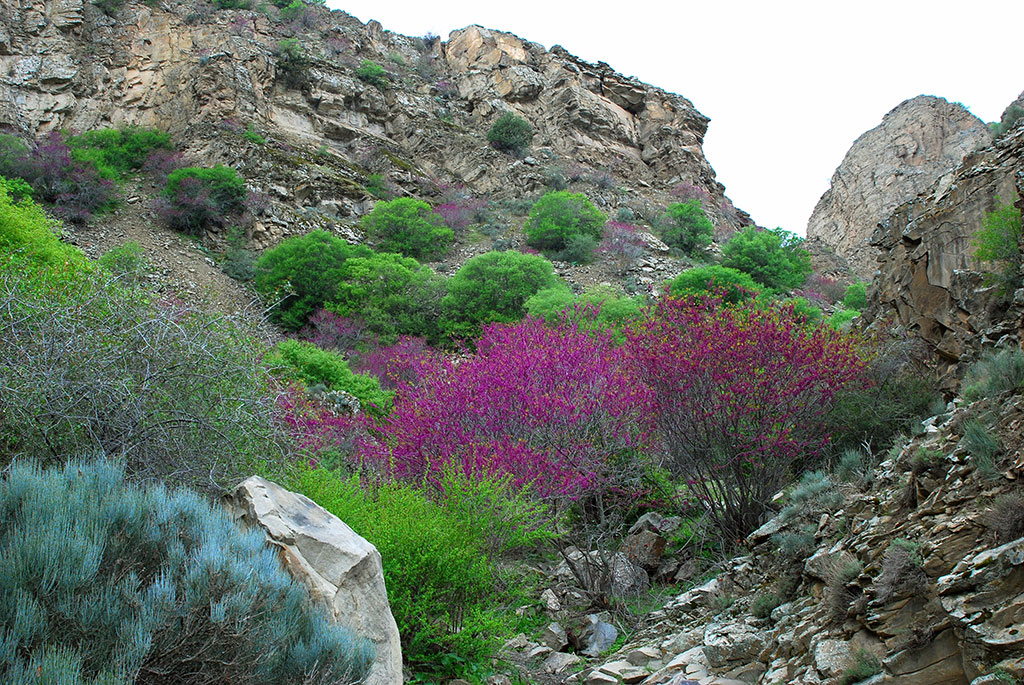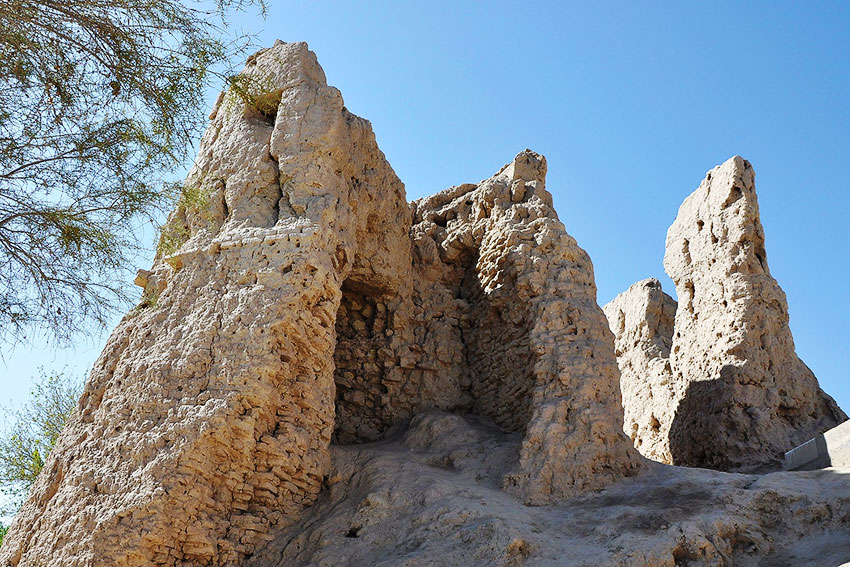This Turkmen dance has become truly nationwide, one of the most favourite and popular among people of different ages. It is performed by very old people and children, who have just learned to walk, respectable men and modest women. It is allured by ardour, merriment and cheerfulness. This dance is called kyushtdepmek or kyushtdepdi. It is rooted in remote past, in the old days when it was an element of dhikr, the ritual repetition of the name of God in a special formula and in a special way, as a form of private and silent worship. The necessity for dhikr comes from the verses of the Koran, “Remember Me and I Will Remember You”, “Remember Allah Often” and the appropriate hadith texts.

The dhikr involves the repetition of particular religious phrases an endless number of times which were supplemented with the specific bodily movements and in some cases rhythmic music and dances. It used to be customary to visit the tombs of their relatives at the night of predestination (gadyr gijesi) in some regions. In the villages in the Caspian region men and women separately went to the graveyard where they spent all the night until the morning commemorating the deceased, reciting the verses (ghazal) and performing the dance – devotional dhikr (kyushtdepdi).
Kyushtdepdi preserved to this day as the ritual entertainment element of the commemoration ceremony aroused interest among young people in nearly all the regions of Turkmenistan with its specific rhythm and ghazal singing and was included in the repertoire of amateur art groups.

There are three variations of kyushtdepdi. These are bir depim – when the dancers make a simultaneously half-turn with their right arm and right leg to the left, then return to the starting position and continue moving in a circle; iki depim – when the dancers make two consecutive half-turns and uch depim – three half-turns.
All the variations of kyushtdepdi need the tempo and synchronized movements. If one of the dancers falls out of step, the other dancers get out of time and the dance loses its spectacular splendour. The profound experience is needed to spectacularly perform kyushtdepdi. Many of performers have been dancing it since childhood. Those most skilful and deftest can turn in the opposite direction and enter the circle of the dancers without throwing the other dancers out of time.

Together with those dancing, the spectators who cheer up the performers are involved in performing kyushtdepdi. Forming a circle around the dancers, they lean forward swinging their arms to the beat of the rhythm and loudly exclaim “aha-aha-aha, ah hey hop-ha!”
The dance can continue interminably because other participants willingly take the place of the dancers and ghazal performers who have got tired.
Folk singing has been accompanying the Turkmen people all their lives. It plays a crucial role in the performance of kyushtdepdi when much depends not only on ghazal performers’ technique but also the content, witticisms and swiftness. Sometimes the dancers sing ghazals. Sometimes, especially at weddings, the dance is performed in the form of a playful competition (usually between a young woman and a young man). The young man sings the ghazal with the following verses:
“Go and tell that girl to bring a remedy for the soul, however, no remedy will help if she doesn’t come to me…”
All laugh, and the young woman sings a ghazal:
“Your clothes are nice but rather tight for you, you are a good guy but you say too many words…”
All laugh again and continue dancing and telling jokes.
Kyushtdepdi has spread so widely and become so popular because it is an adornment of the celebrations, festivities and weddings. At weddings, the groom’s sisters spare no effort glorifying the newlywed.
After gaining independence, the wonderful holidays of the Turkmen people such as Novruz were revived and the new holidays enjoyed by the people such as the Turkmen Carpet Day, the Turkmen Horse Day, the Harvest Day, the Melon Day, the Baghshi Day, the Health Day were established. Our national dance, kyushtdepdi and ghazals written specially to mark the remarkable dates are their inherent attribute.
Here is one of the ghazals dedicated to Novruz bayram. The flowers are coming out, and sweets are handed round on the Novruz day. The beloved Turkmen people become happier with every passing year.
Let the eternally young melody of kyushtdepdi, the ancient Turkmen folk dance flow during the holidays filling the hearts with joy and inviting dancers in a circle.

The dhikr involves the repetition of particular religious phrases an endless number of times which were supplemented with the specific bodily movements and in some cases rhythmic music and dances. It used to be customary to visit the tombs of their relatives at the night of predestination (gadyr gijesi) in some regions. In the villages in the Caspian region men and women separately went to the graveyard where they spent all the night until the morning commemorating the deceased, reciting the verses (ghazal) and performing the dance – devotional dhikr (kyushtdepdi).
Kyushtdepdi preserved to this day as the ritual entertainment element of the commemoration ceremony aroused interest among young people in nearly all the regions of Turkmenistan with its specific rhythm and ghazal singing and was included in the repertoire of amateur art groups.

There are three variations of kyushtdepdi. These are bir depim – when the dancers make a simultaneously half-turn with their right arm and right leg to the left, then return to the starting position and continue moving in a circle; iki depim – when the dancers make two consecutive half-turns and uch depim – three half-turns.
All the variations of kyushtdepdi need the tempo and synchronized movements. If one of the dancers falls out of step, the other dancers get out of time and the dance loses its spectacular splendour. The profound experience is needed to spectacularly perform kyushtdepdi. Many of performers have been dancing it since childhood. Those most skilful and deftest can turn in the opposite direction and enter the circle of the dancers without throwing the other dancers out of time.

Together with those dancing, the spectators who cheer up the performers are involved in performing kyushtdepdi. Forming a circle around the dancers, they lean forward swinging their arms to the beat of the rhythm and loudly exclaim “aha-aha-aha, ah hey hop-ha!”
The dance can continue interminably because other participants willingly take the place of the dancers and ghazal performers who have got tired.
Folk singing has been accompanying the Turkmen people all their lives. It plays a crucial role in the performance of kyushtdepdi when much depends not only on ghazal performers’ technique but also the content, witticisms and swiftness. Sometimes the dancers sing ghazals. Sometimes, especially at weddings, the dance is performed in the form of a playful competition (usually between a young woman and a young man). The young man sings the ghazal with the following verses:
“Go and tell that girl to bring a remedy for the soul, however, no remedy will help if she doesn’t come to me…”
All laugh, and the young woman sings a ghazal:
“Your clothes are nice but rather tight for you, you are a good guy but you say too many words…”
All laugh again and continue dancing and telling jokes.
Kyushtdepdi has spread so widely and become so popular because it is an adornment of the celebrations, festivities and weddings. At weddings, the groom’s sisters spare no effort glorifying the newlywed.
After gaining independence, the wonderful holidays of the Turkmen people such as Novruz were revived and the new holidays enjoyed by the people such as the Turkmen Carpet Day, the Turkmen Horse Day, the Harvest Day, the Melon Day, the Baghshi Day, the Health Day were established. Our national dance, kyushtdepdi and ghazals written specially to mark the remarkable dates are their inherent attribute.
Here is one of the ghazals dedicated to Novruz bayram. The flowers are coming out, and sweets are handed round on the Novruz day. The beloved Turkmen people become happier with every passing year.
Let the eternally young melody of kyushtdepdi, the ancient Turkmen folk dance flow during the holidays filling the hearts with joy and inviting dancers in a circle.






